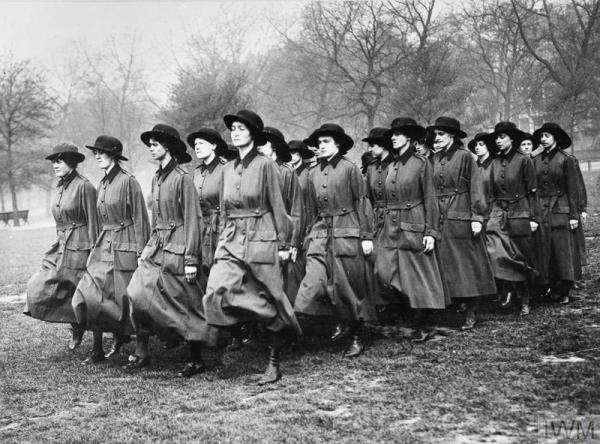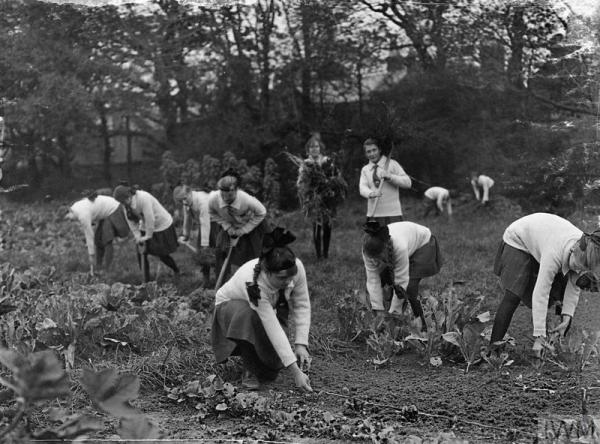Home Front Legacy 1914-18: Big Recording Month

© IWM (Art.IWM PST 2735)
Home Front Legacy Needs You!
Join Home Front Legacy 1914-18 for our big recording month. Throughout August we’ll be encouraging people to research and record Home Front sites in their local area using our resources and recording app. You don’t need any prior experience to get involved and we’ll teach you all the skills you need.
This is your opportunity to help build up a better picture of the archaeological remains of the First World War Home Front throughout the UK. Your records will help preserve the sites and stories for future generations, as well as increase our understanding of this often-forgotten aspect of the war.
What will I find?
Who knows! The range of Home Front sites is wide and varied and it is impossible to predict what you will find where you live. Maybe a local factory was requisitioned to produce munitions or aircraft components? You might discover your live in a house used as a Voluntary Aid Detachment Hospital or War Hospital Supply Depot. Or maybe your local park was used for training new recruits in the art of trench digging. There is so much out there that remains to be re-discovered!
Although you can research and record any aspect of the Home Front, we are encouraging people to investigate the following themes during the Big Recording Month-
Local Events

Trafalgar Square during the ‘Feed the Guns’ campaign of October 1918 © C. Kolonko
There are many interesting and exciting events that took place on the Home Front during the war. These ephemeral occurrences have long since been forgotten but the buildings and areas of land where they took place may remain. If you can tie an event into a known location or building it can be recorded with our recording app. Recruitment drives, War Bond fundraisers, industrial strikes, and protests happened throughout the country and these are just a small sample of what you may find.
The Role of Women

Members of the Women’s Army Auxiliary Corps drilling in Hyde Park © IWM (Q 54089)
Throughout the war, women played a vital role on the Home Front. Many women worked within hospitals treating wounded soldiers, and set up depots to ensure the hospitals were properly supplied. Women also took on many roles on the Home Front that had traditionally been undertaken by men; they started working in heavy industry; such as shipbuilding, engineering and munitions production, driving trams and buses, and joined the Police force for the first time. The Women’s Land Army (WLA) was formed to bring women into agriculture as more farm labourers were conscripted into the army. The vital work of the WLA kept the country fed when food shortages started to take hold. You can help by researching and recording factories where women were employed or even record the farms where the WLA were deployed.
Food and Rationing

Girls at work on an allotment in the grounds of their school during the First World War © IWM (Q 31160)
Food rationing is seen as something that had its origins in the Second World War. But did you know that voluntary rationing was introduced in February 1917, followed by compulsory rationing in January 1918, to help alleviate food shortages caused by unrestricted U-Boat warfare out at sea. National Kitchens were set up throughout the country by the government to help feed the population cheaply and save food. Allotments sprang up on waste ground, school playing fields and any spare bit of land where vegetables could be grown. Members of the Women’s Land Army, wounded soldiers and German Prisoners of War were sent to work in the fields to boost crop production. Rationing and food production had a huge impact on the lives of people back home and you can help to record the forgotten legacy of this period.
As you can see, the remains of the First World War are a lot closer to home than you may think!
How do I get involved?
Each week we will post a new blog post focussing on a different aspect of researching and recording sites in your local area. These bite size chunks of information will help you to find the forgotten remains of the war at home and show you how to record a site with our online recording app.
All you need to do to get involved is follow these weekly blog posts, which will be available here. A new blog will be posted every Monday, with the first blog going out on 31 July. You will also need to register to access the Home Front Legacy Member Toolkit and recording app to start investigating your local area with the guidance of our posts.
You can share your discoveries with us via Twitter and Facebook. The Home Front Legacy team will also be on hand to provide advice through Facebook, Twitter and via email.
Use the hashtag #WW1athome to keep up to date and to share the sites you discover and record.
We Need You!
Join us on 31 July 2017 for our first blog post and help record the physical remains of the First World War Home Front.

